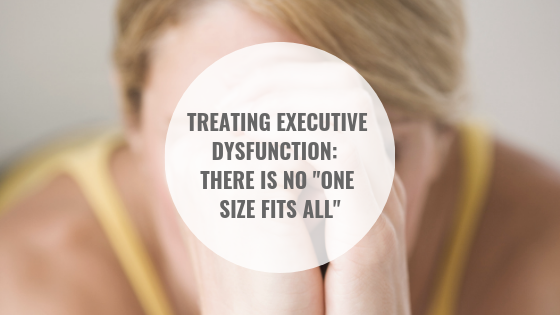Julie Entwistle, MBA, BHSc (OT), BSc (Health / Gerontology)
As a caring professional, I refuse to believe that my clients are not motivated. All of my clients have goals or I would not be treating them. However, their ability to achieve their goals independently remains the reason that they require active therapy. Previously, I wrote about executive functioning (Brain Injury and Executive Functions – When the CEO is on Hiatus), the capacities we require to achieve a goal, and used the example of moving to highlight how people with executive dysfunction may feel on a regular basis when completing relatively simple tasks.
Treatment for executive dysfunction is as broad as it is specific. It is broad because everyone experiences brain injury differently and comes into that type of trauma with varying levels of ability to start with. However, treating problems with executive function is really as simple as taking a goal and breaking this down into component parts, manageable chunks, and smaller goals within the whole.
So, returning to the moving example, assisting someone with executive dysfunction with a pending move will involve making checklists, with time frames, and checking on progress frequently. Personally, I like to take a project approach: calling the goal “Operation Move” and mapping out – start to finish – the metrics for success. Perhaps in month one an “apartment hunting worksheet” is created to help a client summarize all the places they are looking at, the pros/cons, address, and list of questions that need to be answered (price, utilities included, length of the lease, etc.). Often I encourage my clients to use a smartphone to take photos of the options then we cross-reference these and catalog them to keep things organized. From there, the process continues with checklists for calls to make, addresses to change, ways to organize packing and management of belongings. Ensuring the client is responsible for follow-up via “homework” between sessions and holding them accountable for completion of this aids to developing independence. Really, the therapeutic goal is more than just ensuring the client is able to move successfully. Rather, it is demonstrating a model and method that can be used for any future transitions, goals or tasks. This ensures success that is transferable to other events at later dates.
Previously posted June 2013

